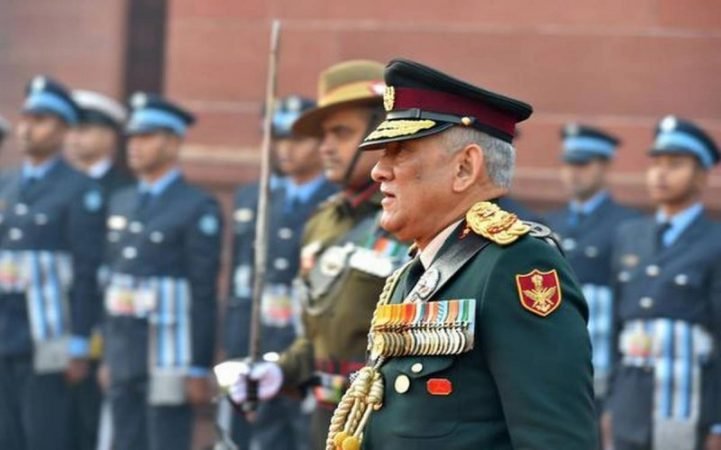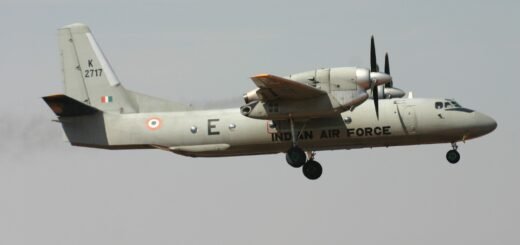An Assessment to Integrated Theatre Command

Abstract
India is in the transitional phase, is trying to shape itself as a capable regional power, if not the global superpower. Nation aspires to achieve, so do India, but the question arises, are we capable enough to frame a strategy beyond our threshold? Moreover, do we have that military capability to achieve those objectives? To have a sync with the objective, the armed forces required to have a unified organizational structure. This unified organizational structure is what the integrated theatre command is all about. This article will look into the armed forces’ current structure and what this integration means for the armed forces? Furthermore, finally, how India can adopt the best indigenous concept of theatre command? While keeping objective and dimensions in mind.

Introduction
“The way a team plays as a whole determines its success. One may have the greatest bunch of individual stars, but if they do not play together, the club will not be worth a dime”.
– Babe Ruth
The Indian armed forces have inherited its organizational structure from the British. The British shaped and defined the structure of Indian armed forces, which suited their interest. We have inherited the skeleton post-independence and then bring about the changes required from time to time, to get the things done according to our needs.
This way of carrying forward the system may benefit, but this collapse when the system is no longer able to sustain further changes. Today, the Indian armed force is operated individually by the different service chiefs. They are the guardian of their turf and frame strategy according to the threat perception from their point of view. To operate those strategies, they have a support system that had exclusively designed for their operational capability. During the time of crisis, especially during the war, they all work together in jointness to carry out operations. Jointness implies synergized use of resources of the three services seamlessly to achieve the best result in the least possible time.
During Kargil operation, this jointness of the armed forces brought the desired result but not on the expected line. The committee set up after the war, found serious glitches in carrying out the operation in jointness. They found that, had the air forces deployed the day army asked for, the direction of war could have been altered drastically in the initial phase only. In jointness, the employment of the resources is subject to debate and discussion; this can sometimes lead to the inter-services friction and can easily hinder the armed forces’ operational capability. This lack of synergy in the individual preparation, for war, by different forces can alter the overall result of the war. Thus, the Kargil review committee and a group of ministers recommended the post of CDS (chief of defence staff) to bring about the flexibility in decision making at a higher level of armed forces. The main reason behind this recommendation is the changing nature and scope of warfare. Future warfare believed to be short, quick, and intense. Achieving success required integrated operation involving all the three services backed by cyber, space, and surveillance.
Recently, the Shekatkar Committee constituted by the ministry of defence also backed the demand for integrated theatre command. Integration seeks to merge the individual service identities to achieve the composite whole, which implies placing all the three services under one commander to execute an operational plan. It aims to cut down the response time during the critical situation of operation as in integration resources of all the three forces are already allocated to the appropriate commander. It overall improves the capability of the forces as during a crisis; they will be working under a single commander. Thus, omitting the different decision-making centre saves quality time for a quick and integrated response to a crisis. In this case, a single commander will be in charge of a particular theatre, and all the resources of the army, air force, and Navy allocated for that theatre will be under his command.
In this way, in the crucial hour of crisis, different services will not be operated differently and will follow the command of theatre commander irrespective of the colour of the uniform they adorn. This concept of integrated theatre command is not new, and the allied forces felt the need for this integrated approach to a crisis during the Second World War. An integrated approach first initiated by British field marshal Bernard Montgomery nicknamed ‘Monty’ during his North African campaign. He moved his supporting air force headquarter from Alexandria to El Alamein. This integration was operated under combined chiefs of staff, having chiefs of both the USA and British. However, the integration is formally first adopted in the USA by Goldwater-Nicholas Act, 1986.

The USA currently operates seven geographical combatant commands (African command, Central Command, European Command, Indo-Pacific Command, Northern Command, Southern Command, Space Command), and three functional combatant Command (Cyber Command, Special Operation Command, and Strategic Command). Similarly, Russia and China also operated and organized their armed forces on the integrated theatre command concept. In India, it is the army that first felt the need for the concept of integrated theatre command. However, Indian air forces and Navy both are opposed to this move for various reasons; first, the Indian air force believes that Indian territorial space is not vast enough to conceptualize integration. They argue that, nor do we have any issue in mobilizing the resources from one corner to another and not do we have any national ambition to acquire foreign territory. Thus, the concept of integration lost its value when we are not operating in a bigger space, say; the Pacific and the Atlantic Ocean. They explain that power like the USA, Russia, and china operate their forces on the line of integrated theatre command is because of their geographical space, ambition, and, more importantly, the availability of resources.
The Indian air force indicates that they do not have enough squadrons, AWACS, to allocate them dedicatedly to different theatre commands. We shall focus on indigenization because procuring weapons from a foreign country has certain demerit; first, it makes the country dependent on others for spare parts and open space for bargaining their strategic interest. Second, weapons had certain operational validity, and one has to procure again, leading to financial liability. Third, the different weapons may not necessarily be on the line of our operational terrain and requirements even after all modifications. Thus, our forces had to utilize the resources they have by all means. Another valid point forwarded by the Indian Navy is the loss of identity. Indian Armed forces comprise 85% army, 10 % air force, and 5 % Navy Personnel. The smaller forces will tend to lose its scope, autonomy, and value when merged with the bigger one. The argument for self-identity within the services does not hold value when the security and interests of a country are at stake.

Till the appointment of first CDS (chief of defence staff) on 1 January 2020, as recommended by all committee formed prior and after Naresh Chandra Committee in 2012, Earlier, Indian armed forces are headed by their respective chiefs, and the senior-most appointed as the chief of staff committee. The chief of staff committee then has to play the dual role of heading the parent and entire armed force. However, his decision as the head of the armed force is not binding on the other chiefs, making him just a nominal head. At the national level, this dual role was a turning nightmare for forces during the time of joint operations. Thus, the appointment of CDS is just a first step toward developing an integrated theatre command. The CDS is a four-star officer of Indian armed force and ‘first among the equals’ and the single point military advisor to the minister of defence. CDS will also head the newly created department of military affairs (DMA) and will be the permanent chairperson of the chief of staff Committee. Before the appointment of the CDS, the military had limited access to political leadership.
The defence secretary and the national security advisor used to act as an interface between the service chiefs and the cabinet committee on security headed by the prime minister. This approach had certain demerits; first, the procurement and acquisition of necessary equipment tend to trap in an unnecessary route. Second, it creates a trust deficit between the military and the government, as later; it always tends to check the power of the military for any possible coup. With the creation of CDS post and appointing General Bipin Rawat as its first chief, it is evident that we have broken the initial barrier in progressing toward reorganizing the organizational structure of armed forces. Just after a couple of months of assuming the office, General Rawat has indicated the creation of two theatre commands and said that ‘India expected to have 5-6 theatre command along the border of China and Pakistan. He said that the planned air defence command, which will combine the air assets of the Army, Navy, and Air force, would be rolled out in mid-2021. The ‘peninsular command,’ which I feel should be named ‘Indian Ocean Command’ because it gives the impression that India is a dominant force in the region, and second, India is fully committed to protecting the trade and territorial integrity of the littoral state. The proposed ‘Peninsular Command’ will be under the naval commander and have full operational power to deal with the region’s security. He also added that all the theatre command would be ready by 2022.

Conclusion
It is very much clear that future battlefield will be non-linear, having a multi-dimensional battlefield characterized by nuclear ambiguity. Thus, forces operating in such a battlefield require EBO (Effect based operation). EBOs can only succeed if all the components of war brought together, and there shall be the synergistic application of power at all the level of warfare, be it tactical, operational, and strategic.


















